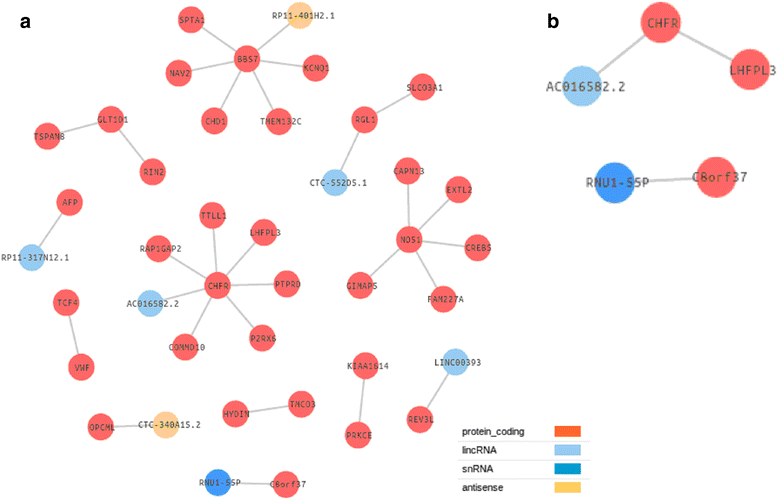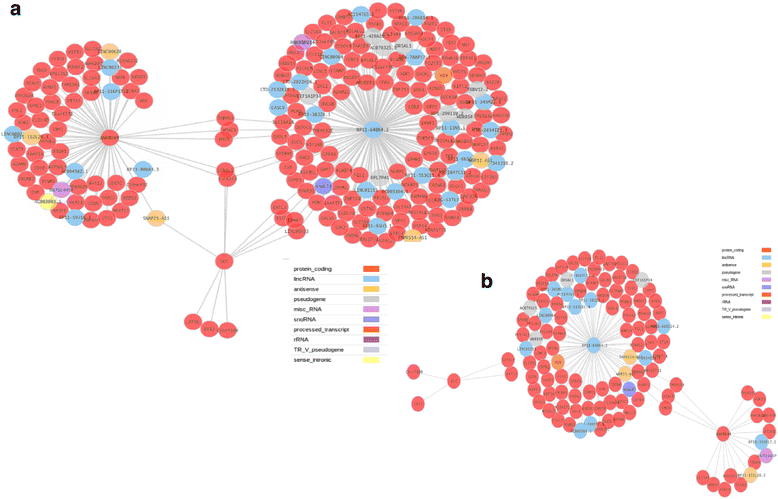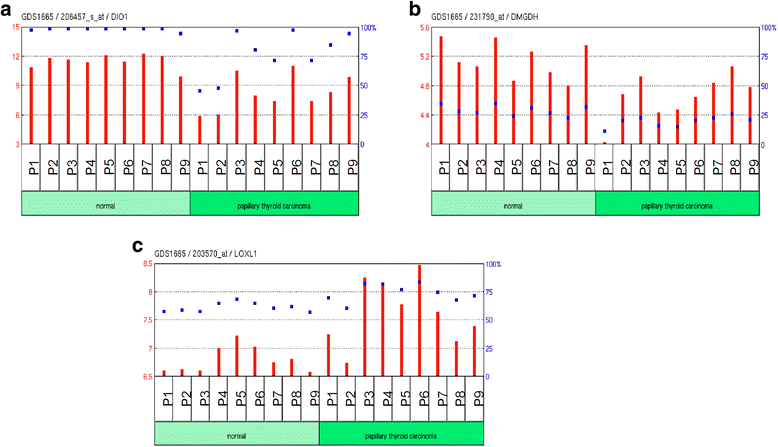Identification of epistatic interactions through genome-wide association studies in sporadic medullary and juvenile papillary thyroid carcinomas
- PMID: 26690675
- PMCID: PMC4685628
- DOI: 10.1186/s12920-015-0160-7
Identification of epistatic interactions through genome-wide association studies in sporadic medullary and juvenile papillary thyroid carcinomas
Abstract
Background: The molecular mechanisms leading to sporadic medullary thyroid carcinoma (sMTC) and juvenile papillary thyroid carcinoma (PTC), two rare tumours of the thyroid gland, remain poorly understood. Genetic studies on thyroid carcinomas have been conducted, although just a few loci have been systematically associated. Given the difficulties to obtain single-loci associations, this work expands its scope to the study of epistatic interactions that could help to understand the genetic architecture of complex diseases and explain new heritable components of genetic risk.
Methods: We carried out the first screening for epistasis by Multifactor-Dimensionality Reduction (MDR) in genome-wide association study (GWAS) on sMTC and juvenile PTC, to identify the potential simultaneous involvement of pairs of variants in the disease.
Results: We have identified two significant epistatic gene interactions in sMTC (CHFR-AC016582.2 and C8orf37-RNU1-55P) and three in juvenile PTC (RP11-648k4.2-DIO1, RP11-648k4.2-DMGDH and RP11-648k4.2-LOXL1). Interestingly, each interacting gene pair included a non-coding RNA, providing thus support to the relevance that these elements are increasingly gaining to explain carcinoma development and progression.
Conclusions: Overall, this study contributes to the understanding of the genetic basis of thyroid carcinoma susceptibility in two different case scenarios such as sMTC and juvenile PTC.
Figures



Similar articles
-
Clinical significance of papillary thyroid cancer risk loci identified by genome-wide association studies.Cancer Genet. 2015 Mar;208(3):68-75. doi: 10.1016/j.cancergen.2015.01.004. Epub 2015 Jan 30. Cancer Genet. 2015. PMID: 25746573
-
Association study of 69 genes in the ret pathway identifies low-penetrance loci in sporadic medullary thyroid carcinoma.Cancer Res. 2007 Oct 1;67(19):9561-7. doi: 10.1158/0008-5472.CAN-07-1638. Cancer Res. 2007. PMID: 17909067
-
An epistatic interaction between the PAX8 and STK17B genes in papillary thyroid cancer susceptibility.PLoS One. 2013 Sep 23;8(9):e74765. doi: 10.1371/journal.pone.0074765. eCollection 2013. PLoS One. 2013. PMID: 24086368 Free PMC article.
-
A comprehensive overview of the role of the RET proto-oncogene in thyroid carcinoma.Nat Rev Endocrinol. 2016 Apr;12(4):192-202. doi: 10.1038/nrendo.2016.11. Epub 2016 Feb 12. Nat Rev Endocrinol. 2016. PMID: 26868437 Review.
-
Genetic predisposition to papillary thyroid cancer.Endokrynol Pol. 2010 Sep-Oct;61(5):486-9. Endokrynol Pol. 2010. PMID: 21049463 Review.
Cited by
-
Germline mutations predisposing to diffuse large B-cell lymphoma.Blood Cancer J. 2017 Feb 17;7(2):e532. doi: 10.1038/bcj.2017.15. Blood Cancer J. 2017. PMID: 28211887 Free PMC article. Review.
-
Eigen-Epistasis for detecting gene-gene interactions.BMC Bioinformatics. 2017 Jan 23;18(1):54. doi: 10.1186/s12859-017-1488-0. BMC Bioinformatics. 2017. PMID: 28114904 Free PMC article.
-
Harnessing deep learning for SNP-based disease prediction in genomics.Int J Inf Technol. 2024 Jul 4:10.1007/s41870-025-02624-8. doi: 10.1007/s41870-025-02624-8. Online ahead of print. Int J Inf Technol. 2024. PMID: 40822924 Free PMC article.
-
Artificial Intelligence in Epigenetic Studies: Shedding Light on Rare Diseases.Front Mol Biosci. 2021 May 5;8:648012. doi: 10.3389/fmolb.2021.648012. eCollection 2021. Front Mol Biosci. 2021. PMID: 34026829 Free PMC article. Review.
-
Genetic expression profile-based screening of genes and pathways associated with papillary thyroid carcinoma.Oncol Lett. 2018 Nov;16(5):5723-5732. doi: 10.3892/ol.2018.9342. Epub 2018 Aug 21. Oncol Lett. 2018. PMID: 30344727 Free PMC article.
References
-
- Figge JJ. Epidemiology of thyroid cancer. In: Wartofsky LVND, editor. Thyroid Cancer: A Comprehensive Guide to Clinical Management. Totowa: Human Press; 1999.
-
- Randolph GW, Maniar D. Medullary carcinoma of the thyroid. Cancer Control. 2000;7(3):253–261. - PubMed
-
- Moline J EC: Multiple Endocrine Neoplasia Type 2. In: SourceGeneReviews® [Internet]. Edited by Pagon RA AM, Ardinger HH, Wallace SE, Amemiya A, Bean LJH, Bird TD, Dolan CR, Fong CT, Smith RJH, Stephens K, editors. Seattle: University of Washington, Seattle; 2005.
-
- Eng C, Clayton D, Schuffenecker I, Lenoir G, Cote G, Gagel RF, et al. The relationship between specific RET proto-oncogene mutations and disease phenotype in multiple endocrine neoplasia type 2. International RET mutation consortium analysis. Jama. 1996;276(19):1575–1579. doi: 10.1001/jama.1996.03540190047028. - DOI - PubMed
Publication types
MeSH terms
Supplementary concepts
LinkOut - more resources
Full Text Sources
Other Literature Sources
Medical
Molecular Biology Databases

